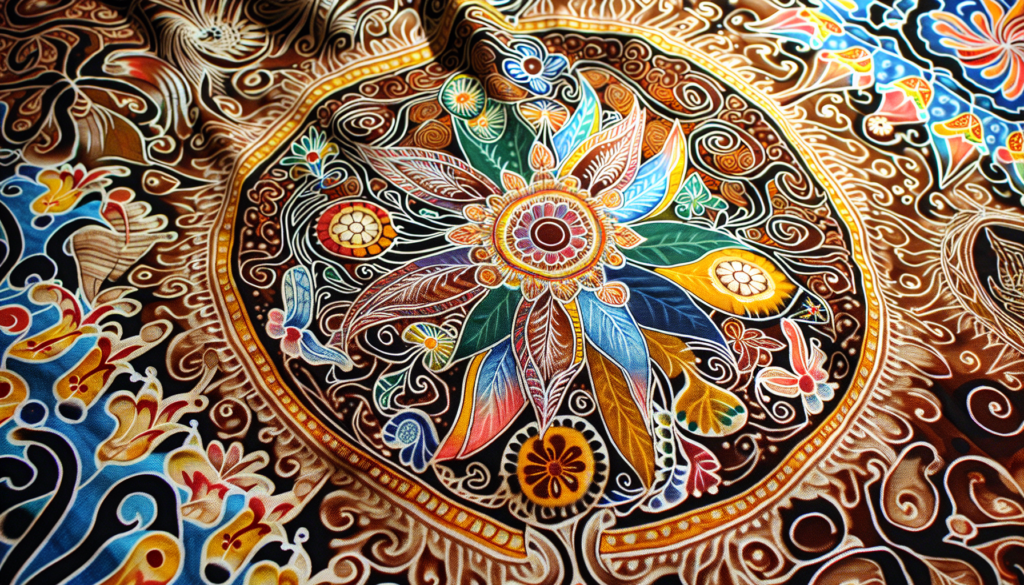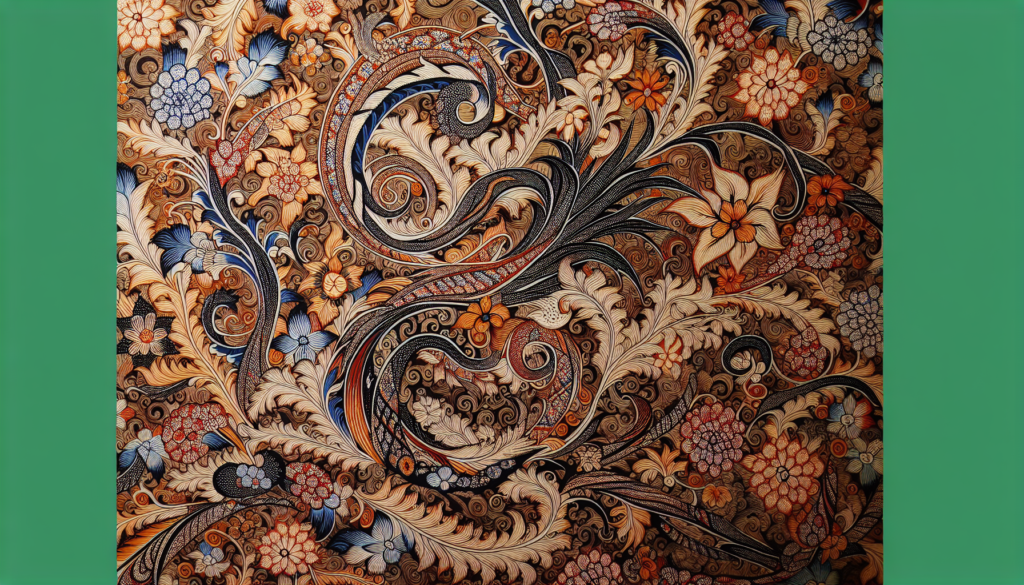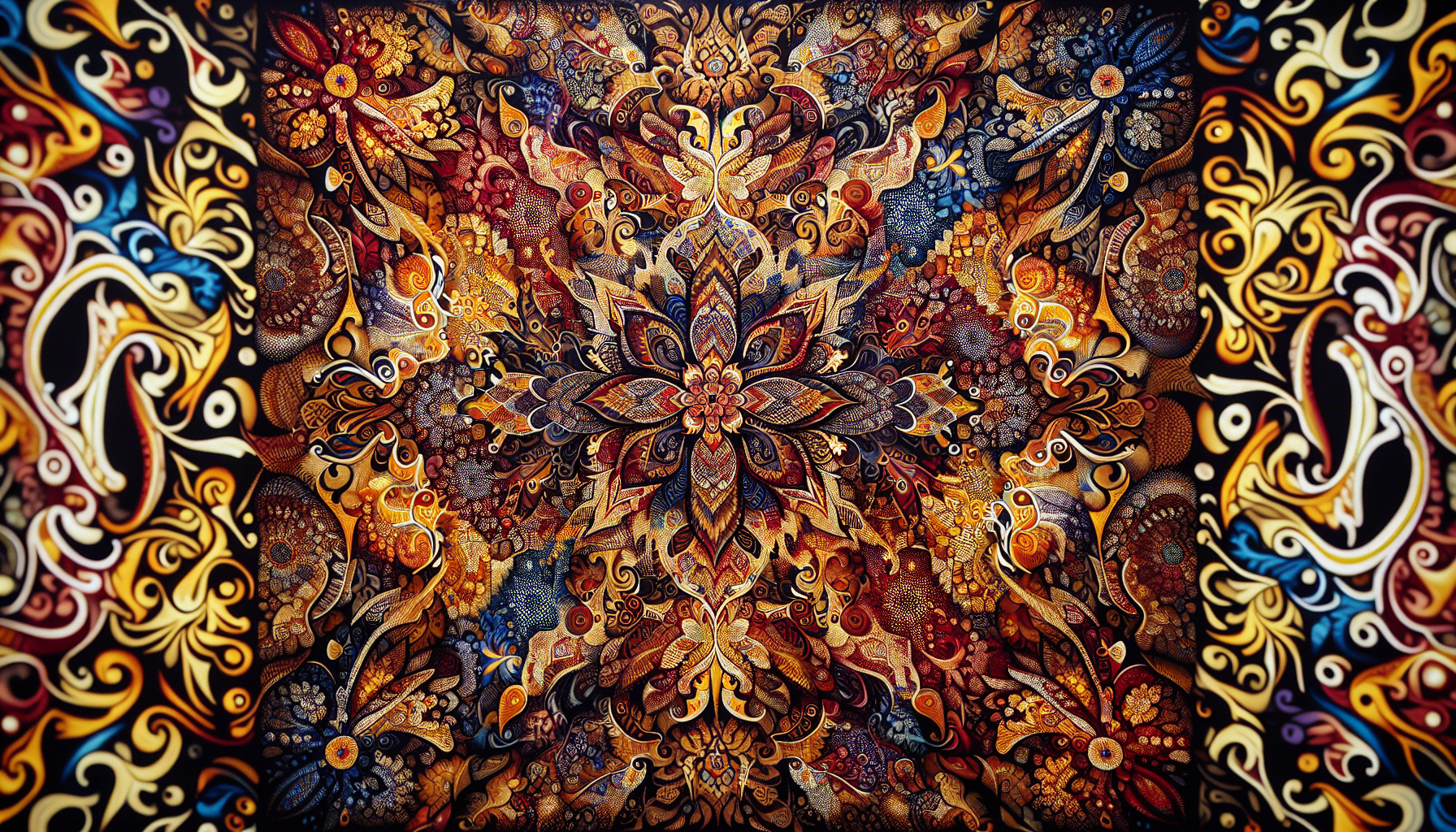Have you ever wondered about the intricate designs and vibrant patterns that adorn the traditional textile art known as batik painting? This question opens a gateway into a rich blend of culture, history, and artistry that has captivated art lovers and cultural enthusiasts around the globe. In today’s world, where creativity meets tradition, batik painting stands as a unique representation of artistic expression and cultural heritage.

Understanding Batik Painting
Batik painting, an ancient art form, is renowned for its unique method of dyeing cloth. An intricate process involving wax-resist techniques sets batik apart, creating one-of-a-kind textiles with detailed motifs. This technique has been practiced for centuries, primarily in parts of Indonesia, Malaysia, and Africa, and it continues to hold significant cultural importance to this day.
Historical Context of Batik Painting
The history of batik is as vibrant as its patterns. Its roots can be traced back over 2,000 years, although it is in Indonesia, particularly on the island of Java, where batik developed into a high form of art. The word ‘batik’ is believed to be derived from the Javanese word ‘tik,’ which means to dot, referring to its procedural characteristic. Over time, batik evolved through influences from trade interactions with various cultures, such as the Dutch and Chinese, enriching its designs and techniques.
Cultural Significance
Batik painting is more than just a form of textile art; it holds immense cultural significance. In Indonesia, batik is deeply interwoven with Javanese cultural expressions, ceremonies, and rituals. Different patterns symbolize various cultural beliefs and societal practices. For instance, certain motifs were traditionally reserved for royalty, and specific colors might be used for weddings or funerals. Understanding these nuances offers a glimpse into the local customs and traditions of the regions where batik flourishes.
The Batik Painting Process
Batik painting involves several complex steps, each of which contributes to the final masterpiece. Mastery of this art form requires not only a creative vision but also precision and patience.
Step-by-Step Process
-
Design Preparation: The first step involves creating a design on plain fabric. Artists often sketch these designs with a pencil on the cloth, ushering in the blueprint for detailed wax patterns that follow.
-
Wax Application: Using a canting tool or a brush, hot wax is applied meticulously over the areas meant to maintain their original color. The wax serves as a resist, protecting specific sections of the fabric from dye.
-
Dyeing: The fabric is then immersed in a dye bath. The colors fill the non-waxed sections of the fabric, and multiple dyeing cycles may be required for multicolored patterns.
-
Wax Removal and Reapplication: After dyeing, the wax is removed by boiling the fabric in water. This step might be repeated several times if the design includes multiple colors and layers, with wax being reapplied creatively between each dye phase.
-
final Rinse: Once all layers are completed and the wax is entirely removed, the fabric is thoroughly rinsed to ensure that excess dye does not affect the intricate designs.
Tools and Materials
Understanding the tools and materials used in batik painting enhances comprehension of the skill involved. A canting is a specialized tool used for drawing with wax. Meanwhile, dye baths require precision in temperature and concentration to ensure vibrant colors that adhere well to the fabric, typically made from natural fibers like cotton or silk, which absorb dyes effectively.
Varieties of Batik Painting
Batik painting is not confined to a single style. Various regions contribute unique techniques and motifs, diversifying this ancient art form into distinct varieties.
Javanese Batik
Javanese batik, a significant and historical variant, is known for its rich symbolism and traditional patterns. It often includes motifs such as parang (diagonal patterns), kawung (resembles cross-sections of fruit), and ceplok (geometric motifs). These designs carry symbolic meanings, reflecting philosophical, religious, and social values.
African Batik
African batik differs from its Javanese counterpart, emphasizing bright colors and bold, large-scale patterns. This style often incorporates symbolism rooted in African culture, with motifs representing flora, fauna, and tribal markers. African batik’s vibrant palette and expressive designs add to the diversity of this art form.
Contemporary Batik
Contemporary batik reflects modern adaptations of traditional techniques. Artists today explore new materials, methods, and designs, allowing for innovative interpretations. These can range from abstract art to thematic storytelling through textiles, broadening the scope of batik’s aesthetic appeal.
The Global Influence of Batik Painting
Batik painting’s global reach extends beyond the countries of its origin. The art form has been embraced worldwide, influencing fashion, interior design, and visual arts. Today, batik can be seen on international runways, in art galleries, and as a part of modern-day fashion trends.
Batik in Fashion
The vibrant patterns of batik have inspired leading fashion designers to incorporate batik into their collections. Its natural motifs and eye-catching designs provide a unique aesthetic, appealing to those who appreciate cultural heritage. This trend celebrates batik’s artistic integrity while also making it highly contemporary.
Educational and Cultural Exchange
Batik painting serves as a valuable cultural exchange medium, facilitating mutual understanding by sharing cultural values through art. Workshops and exhibitions worldwide introduce people to the nuances of batik, furthering its appreciation and understanding.

Environmental and Economic Impact
The production of batik has significant environmental and economic effects. While it fosters sustainable practices, thanks to traditional dyeing methods and natural materials, the still-existing traditional industry faces challenges in an economy driven by mass production and synthetic alternatives.
Sustainability in Batik
Efforts to produce eco-friendly batik focus on using plant-based dyes and biodegradable materials. This approach reduces the environmental footprint, making batik a viable option for those seeking sustainable and ethical textile arts.
Economic Contributions
Batik production contributes economically to many communities, especially in regions where traditional methods are still practiced. It sustains local artisans and small businesses, creating economic opportunities anchored in cultural expertise and craftsmanship.
Challenges and Preservation
While batik painting holds deep cultural roots and potential, it also faces challenges that require strategic preservation efforts.
Modern Challenges
The global textile industry’s expansion, with its favoring of synthetic fabrics and faster production cycles, poses significant challenges to traditional batik artisans. Competing in a market dominated by less labor-intensive methods requires innovation while maintaining authenticity.
Preservation Efforts
To preserve batik, governments and cultural organizations advocate for the recognition of batik as a cultural heritage. UNESCO’s designation of batik as an Intangible Cultural Heritage of Humanity exemplifies such efforts. Educational programs, workshops, and exhibitions aim to engage new generations, ensuring that the knowledge and skills associated with batik remain vibrant.
Conclusion
In answering the question of what batik painting is, you uncover much more than a simple art form. It is a narrative woven into our cultural tapestry, a dynamic blend of color, pattern, history, and technique. Whether you are an art connoisseur, a cultural enthusiast, or someone seeking sustainability in fashion, batik painting offers endless possibilities to explore and integrate these dimensions into your understanding of art and culture. As it continues to evolve, batik keeps its vibrant colors alive, telling the stories of those who create and cherish it.



